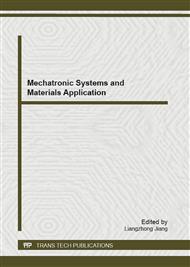p.222
p.227
p.231
p.236
p.242
p.246
p.252
p.258
p.262
Research on Fine and Deep Holes of Pulse Electrochemical Finishing
Abstract:
Top-quality surfaces are obtained by means of pulse electrochemical finishing (PECF) in neutral electrolyte. The rules of effect of main experimental parameters such as pulse current density, electrolyte flow rate and interelectrode gap on surface quality are analyzed based on the experiments in detail. Moreover, the technique are applied to some typical cases such as surface finishing of fine and deep holes that is more difficult to be machined by the traditional finishing technologies. The results show mirror-like surfaces could be gained by PECF and the surface roughness values could be reduced from more than Ra 1.6μm to less than Ra 0.08μm within several seconds. The experiments show that PECF will play an important role in finishing key parts that is more difficult to be machined by the traditional finishing technologies in the modern manufacturing industries.
Info:
Periodical:
Pages:
242-245
Citation:
Online since:
November 2012
Authors:
Price:
Сopyright:
© 2012 Trans Tech Publications Ltd. All Rights Reserved
Share:
Citation:


